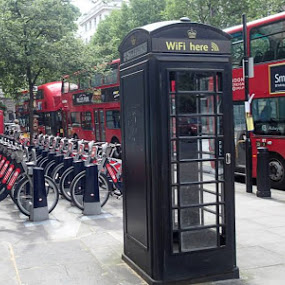Atmospheric Marketing: Bringing a Classic Marketing Tactic Into the Digital Era
by Lindsay Rowntree on 12th Feb 2016 in News


Every day, a staggering 5.5 million new ‘things’ are connected to the internet – each adding to the ever-expanding sea of consumer data. How are marketers able to take advantage of this array of connected devices? Lindsay McEwan (pictured below), general manager EMEA, Tealium, tells ExchangeWire how atmospheric marketing is shifting from in-store factors, like displays and fixtures, to proactive connectivity using real-time data signals.
From wearables and fitness trackers, to connected home appliances and cars, the Internet of Things (IoT) is growing at an impressive rate and providing extraordinary opportunities for brands to get closer to consumers than ever before. When used effectively, the mass of both structured data and unstructured sentiment from the IoT provides brands with unprecedented insight into what consumers are doing and what they want, so they can be targeted with the right message at the right time to deliver the moment of truth.
With 89% of marketers now focusing on delivering outstanding customer experience – rather than battling over competitive pricing – how can brands exceed consumers’ expectations? The answer lies in atmospheric marketing.
The term atmospheric marketing was originally applied to the practice of altering the display surrounding an in-store product to enhance its appeal to customers; but the phrase can now be updated with a digital definition. The modern meaning of atmospheric marketing would be using data signals to predict consumer needs, and then proactively pushing relevant messaging to meet those needs, in real time.
 Analysing customer data to predict what consumers will buy is not a new concept, and is central to supermarket loyalty schemes. Tesco actively tracks the shopping habits of its Clubcard members and regularly sends out vouchers for items they are likely to need, based on analysis of previous purchasing behaviour combined with observed buying patterns. In one memorable example, Tesco flagged the first time Clubcard customers purchased nappies and then sent them vouchers for beer – alongside more obvious baby related items. This move was in response to research which suggested new fathers spent less time at the pub and would therefore buy more beer to drink at home.
Analysing customer data to predict what consumers will buy is not a new concept, and is central to supermarket loyalty schemes. Tesco actively tracks the shopping habits of its Clubcard members and regularly sends out vouchers for items they are likely to need, based on analysis of previous purchasing behaviour combined with observed buying patterns. In one memorable example, Tesco flagged the first time Clubcard customers purchased nappies and then sent them vouchers for beer – alongside more obvious baby related items. This move was in response to research which suggested new fathers spent less time at the pub and would therefore buy more beer to drink at home.
The valuable insight provided by loyalty schemes allows retailers to deliver relevant, personalised offers to their customers, and the recent launch of Marks & Spencer’s Sparks card demonstrates brands still see benefit in these schemes. But today’s tech-savvy, real-time society is pushing brands to respond more quickly to data signals, rather than waiting weeks to post discount vouchers. Boots revamped its well-known Advantage Card scheme accordingly, swapping quarterly paper coupons for a mobile app that allows members to instantly take advantage of personalised offers. Through this proactive approach, Boots aim to stay one step ahead of customer needs. As connected devices and packaging become more common, IoT products will be able to feed back into these loyalty schemes. Perhaps a bottle of gin bought in a Marks & Spencer food store could notify Sparks when it is running low, or a hairdryer purchased at Boots could let the Advantage Card scheme know when it needs to be replaced.
Retail brands aren’t the only ones embracing new technologies and atmospheric marketing to predict and meet consumer needs. Virgin Atlantic trialled the use of Apple iBeacons to push relevant messaging to passengers at Heathrow Airport, reminding them to open their electronic boarding pass when they were known to be approaching security, and delivering relevant offers as they passed particular shops or services at the terminal. Coca-Cola also experimented with the use of beacon technology to gather audience data by delivering a mobile offer for a free drink to cinema-goers as they entered the building, followed up a week later with an offer for a free cinema ticket.
While these are good examples of using atmospheric marketing in isolation, a more holistic approach to identifying consumer needs will be required as the IoT becomes increasingly established. The United States Tennis Association (USTA) makes customer experience central to its digital marketing strategy all year round, and not just surrounding its flagship event, the US Open. USTA analyses player and match data, as well as user sentiment and activity across all digital channels, to understand what its fans are looking for; and uses push notifications to provide the relevant content. New and emerging brands are beginning to incorporate atmospheric marketing into their core business culture, with online-only bank Atom aiming to become virtually telepathic – finding solutions to issues customers don’t yet know they have – and ride-sharing service Uber using individual profiles to personalise the journey, even linking with customers’ Spotify accounts.
Effective atmospheric marketing involves aggregating and normalising the huge volumes of structured and unstructured data from connected objects in one place to build a complete customer view, ideally through the use of Customer Data Platforms (CDPs). A faster and cheaper alternative to traditional data warehouses, CDPs are controlled directly by marketers and provide a comprehensive 360-degree view of the customer across all channels and interactions. CDPs feature prebuilt integrations to enable communication with external systems and – most importantly – support the real-time interactions needed for a proactive approach to marketing execution. As the IoT continues to grow, CDPs will serve as a central co-ordination point for managing a unified customer experience, empowering brands to predict what consumers will want and take action accordingly.
Growth in the IoT shows no sign of slowing and – as related data volumes continue to surge – brands must act now to avoid being swamped. Atmospheric marketing, and associated technologies such as CDPs, will allow forward-thinking brands to predict and fulfil consumer needs, making the shift to proactive, real-time connectivity.
DataDigital MarketingDisplayIoT








Follow ExchangeWire